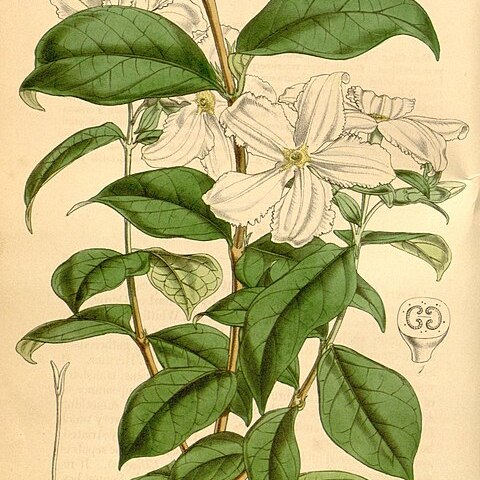Corolla hypocrateriform; tube slender, appressed hairy outside and densely hairy at the throat; lobes variable, mostly broadly elliptic but sometimes narrow, imbricate (quincuncial) in bud, mostly finely puberulous, spreading.
Ovary 2-locular; ovules numerous; style slender, with two linear thickened stigma arms just exserted in long-styled flowers but only reaching to about halfway up the tube in short-styled flowers.
Fruit slightly fleshy but soon dry, indehiscent, mostly globose or oblong-globose, crowned by the persistent calyx lobes, many-seeded, the seeds adhering in two masses.
Stamens situated in the tube in both long-and short-styled forms but at different levels; anthers linear, affixed near their base on very short filaments.
Leaves opposite, shortly petiolate; stipules with 2 distinct teeth, sometimes subulate, subpersistent or eventually falling.
Flowers rather large, mostly sweet-scented, 4–6-merous, solitary or few to many in lax to dense terminal and lateral cymes.
Calyx tube turbinate or oblong; limb-tube ± obsolete; lobes ± leafy, ovate to oblong, elliptic or lanceolate.
Seeds small, strongly foveolate, the floors of the depressions pitted.
Shrubs or small trees, rarely subshrubs or climbers.
Disk small, swollen.

